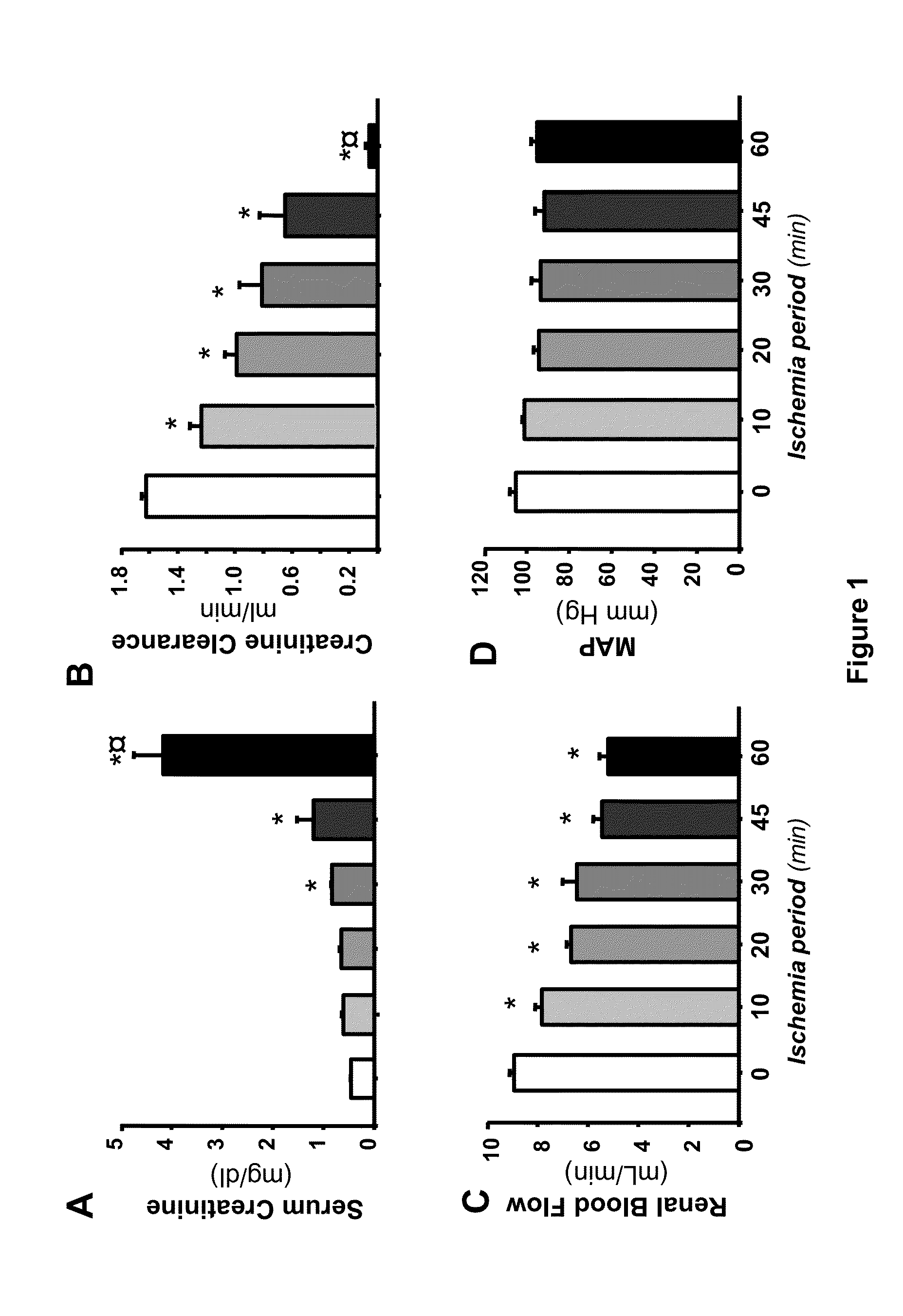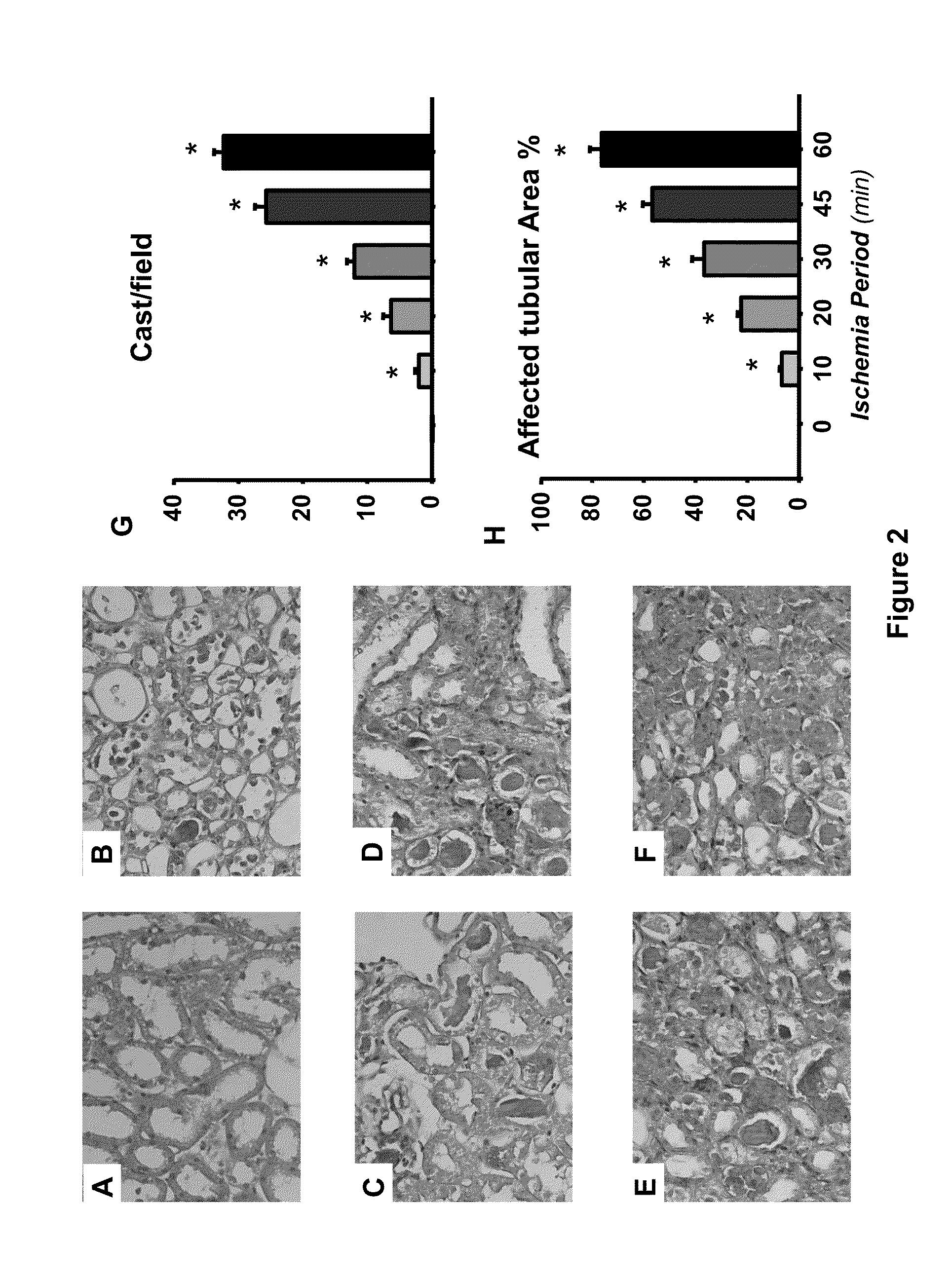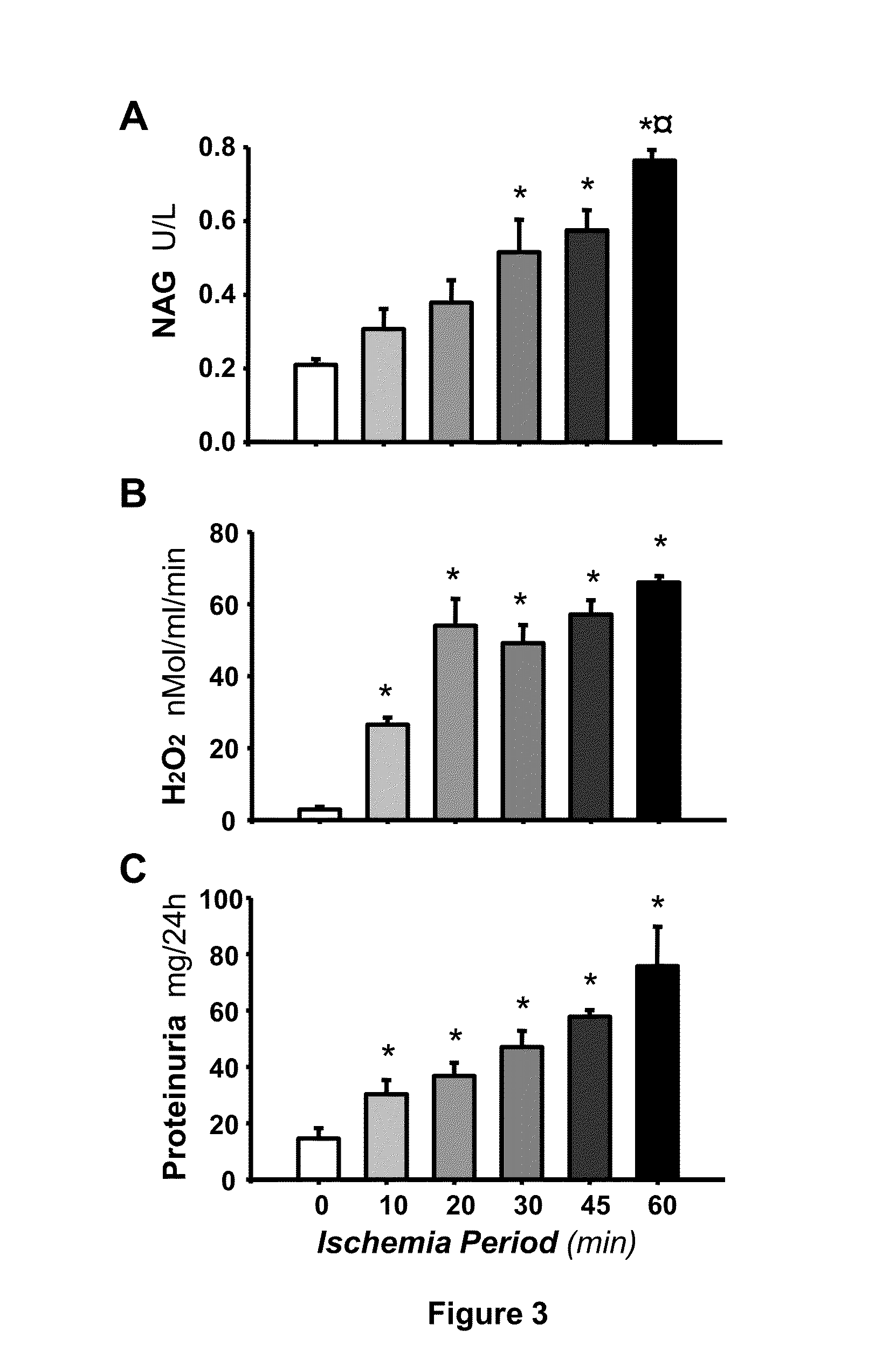Diagnostic method for detecting acute kidney injury using heat shock protein 72 as a sensitive biomarker
a technology of heat shock protein 72 and diagnostic method, applied in the field of clinical medicine, can solve the problems of high morbidity and mortality among hospitalized patients, insignificant improvement, and high elevated morbidity and mortality of aki-associated patients
- Summary
- Abstract
- Description
- Claims
- Application Information
AI Technical Summary
Benefits of technology
Problems solved by technology
Method used
Image
Examples
example 1
[0018]To demonstrate Hsp72 usefulness as a sensitive and early biomarker of AKI, we used the renal ischemia / reperfusion (I / R) model in the rat. Ischemia / reperfusion model: Male Wistar rats were used throughout the study. The rats were anesthetized with sodium pentobarbital (30 mg / kg i.p.), laparotomy was performed and the renal pedicles were dissected, thereafter the blood flow was interrupted to the kidneys by clamping both arteries during 10, 20, 30, 45 and 60 minutes with the objective of evaluating different degrees of renal injury, from low injury to moderate and severe kidney injury. Furthermore, a group subjected to false surgery was included as a control. Each group was conformed for 6 rats. At the end of the ischemia period, the rats were sutured and the renal reperfusion was allowed for 24 hr. To determine the utility of quantifying Hsp72 mRNA levels as a biomarker, 36 rats divided in 6 groups were used; control group and the rats subjected to bilateral ischemia of 10, 20,...
example 2
Hsp72 Detection by Using Real Time PCR
[0021]For Hsp72 mRNA levels detection, 30 male Wistar rats were subjected to bilateral ischemia of 30 min were divided into six groups: rats subjected to control surgery (control group) and rats subjected to bilateral ischemia of 10, 20, 30, 45 and 60 min and 24 of reperfusion. One hour after the surgery the rats were housed into metabolic cages for 24 hours. The metabolic cages were previously treated with an RNA inhibitor (RNAse Zap, Ambion). In the tube, where the urine was collected for 24 h, 300 μl of RNA later (Ambion) were added and the samples were centrifuged at 3000 rpm during 30 min. The urinary sediment was resuspended in phosphate buffer pH=7.4 and was again centrifuged at 13000 rpm during 3 min. The total RNA extraction was made according to the Trizol method given by the manufacturer (Invitrogen). RNA concentration was determined by UV absorbance at 260 nm and RNA integrity was corroborated by 1% agarose gel electrophoresis. Each ...
example 3
Hsp72 Detection by Using ELISA
[0022]For Hsp72 protein levels detection, 36 rats were included and subjected to bilateral ischemia of 10, 20, 30, 45 and 60 min. One hour after the surgery, the rats were putted in the metabolic cages for 24 hours and the urine was collected. The urine must be used immediately for ELISA or western blot assays, otherwise must be stored at −80 C to avoid Hsp72 degradation. For Hsp72 quantification by ELISA the commercial kit Hsp70 High sensitivity ELISA kit produced by Stressgene was used as is briefly explained:[0023]1) 100 μl of the urine samples was added to each well of the ELISA plate;[0024]2) The plate was incubated for 2 h at room temperature and with gentle shaking;[0025]3) Three washes must be performed in each well with the wash buffer provided by the kit;[0026]4) 100 μl of the primary antibody (anti-Hsp72) must be added to the wells and the plate is incubated for 60 min. At the end of the period, three washes must be done as mentioned on point...
PUM
| Property | Measurement | Unit |
|---|---|---|
| real time PCR | aaaaa | aaaaa |
| pH | aaaaa | aaaaa |
| concentration | aaaaa | aaaaa |
Abstract
Description
Claims
Application Information
 Login to View More
Login to View More - R&D
- Intellectual Property
- Life Sciences
- Materials
- Tech Scout
- Unparalleled Data Quality
- Higher Quality Content
- 60% Fewer Hallucinations
Browse by: Latest US Patents, China's latest patents, Technical Efficacy Thesaurus, Application Domain, Technology Topic, Popular Technical Reports.
© 2025 PatSnap. All rights reserved.Legal|Privacy policy|Modern Slavery Act Transparency Statement|Sitemap|About US| Contact US: help@patsnap.com



